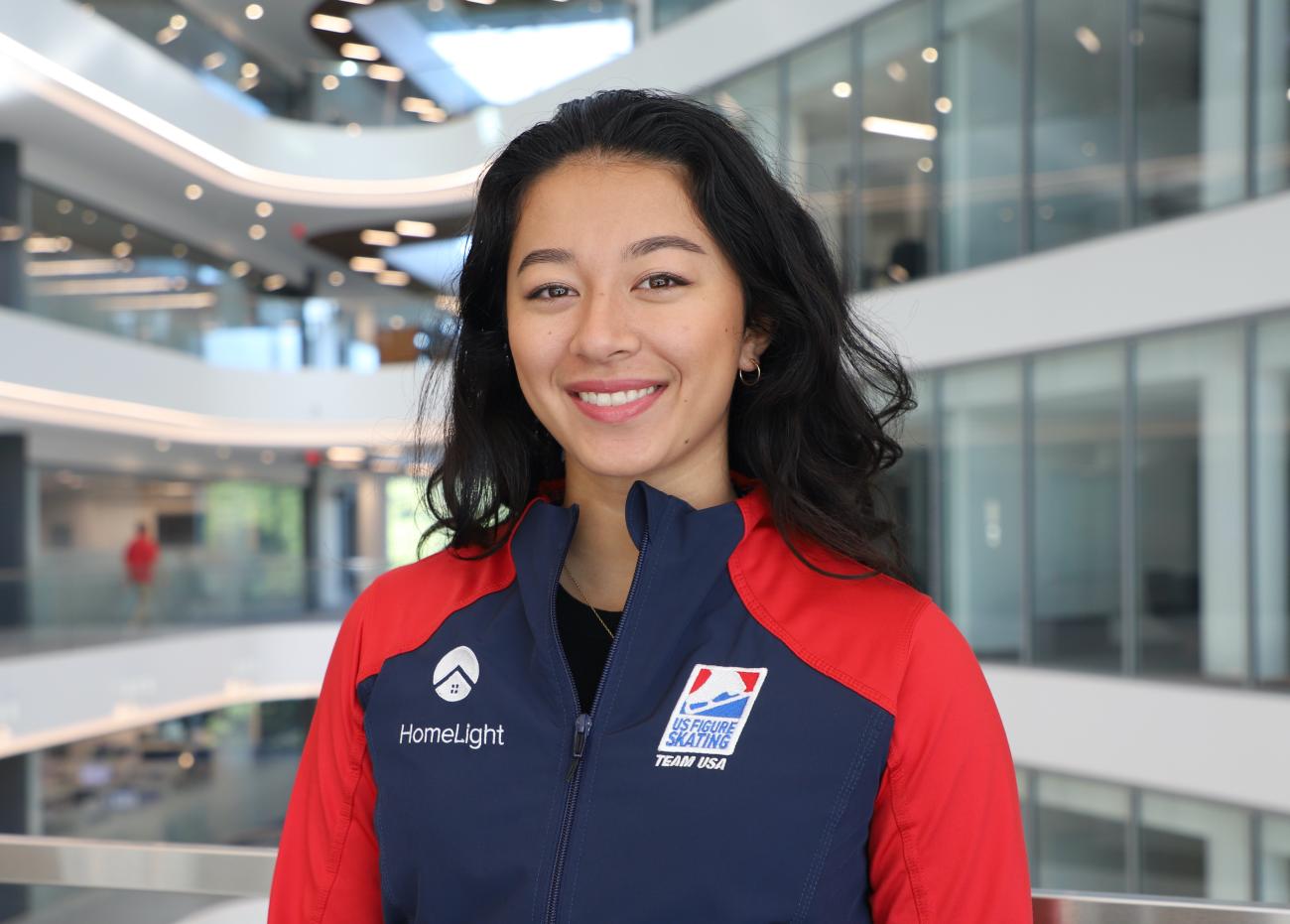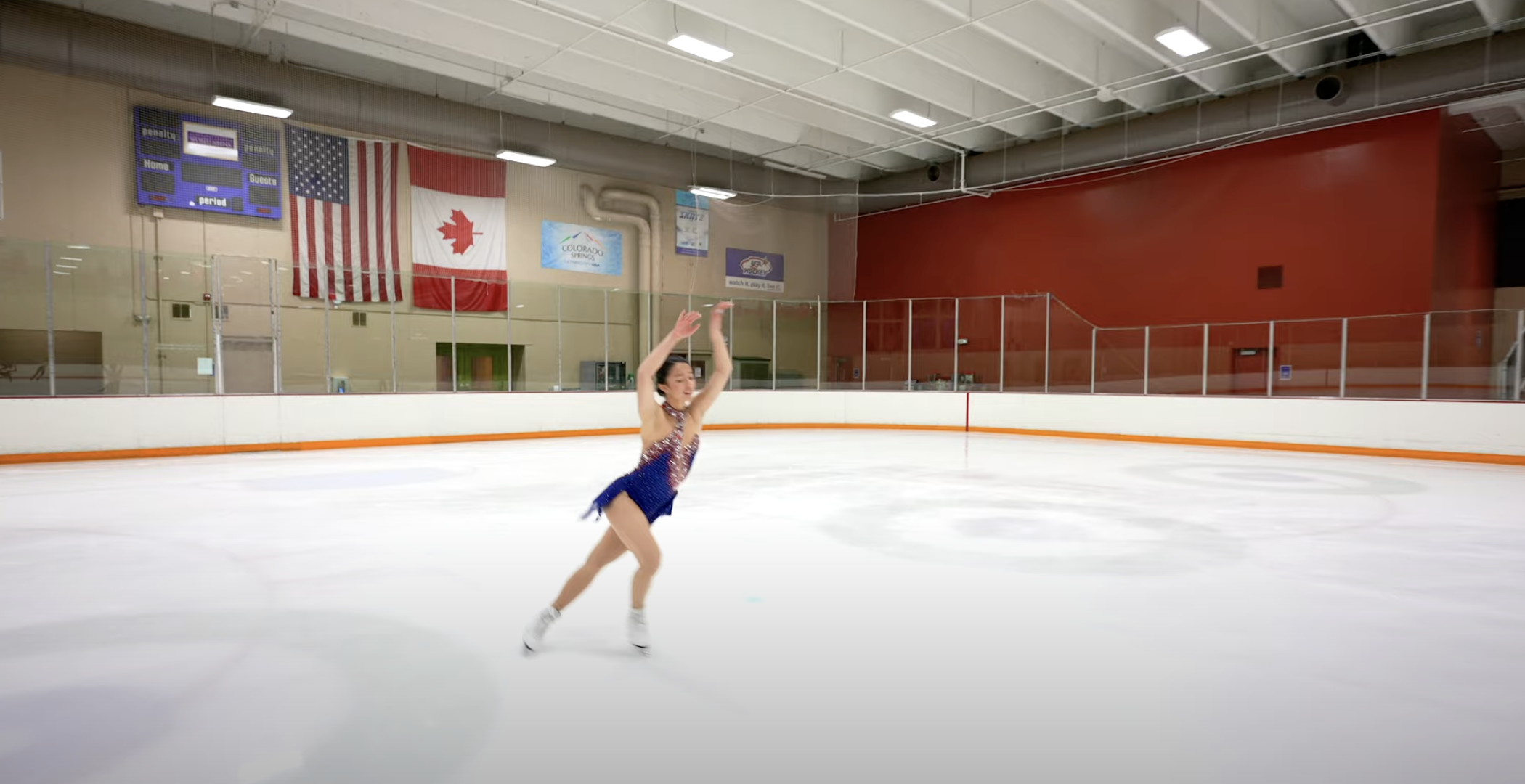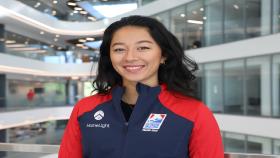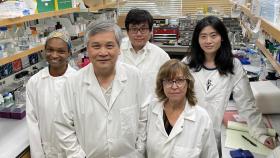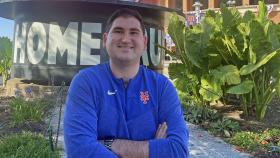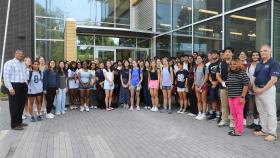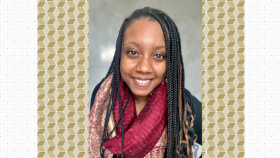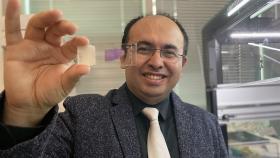Sierra Venetta didn’t start skating with the intention of becoming a champion. She was just a kid at her friend’s birthday party, desperately clinging to the rink wall, trying not to fall.
“I was terrible at it,” said Venetta, who had tried a bit of everything else, like a lot of other kids — ballet, gymnastics, soccer. But this was her first time on the ice, and despite the wobbly start, something about the experience stuck with her.
For Christmas that year, her mother signed her up for group skating lessons. Venetta loved it and steadily progressed through the skill levels of figure skating. It wasn’t long before she was noticed.
“One day, my coach approached my dad and me, and she said, ‘You’ve got some potential. Would you like to start private lessons?’” Venetta didn’t hesitate. She began training seriously.
And with that decision, what started as a shaky, clumsy experience became something more, something that would shape the rest of her life.
Now 24 and a senior in the Wallace H. Coulter Department of Biomedical Engineering at Georgia Tech, Venetta has been skating for nearly two-thirds of her life. By age 19, she’d earned a spot on Team USA, competed at the U.S. National Championships as a senior level skater, and represented the U.S. internationally in the Netherlands.
Getting there wasn’t easy.
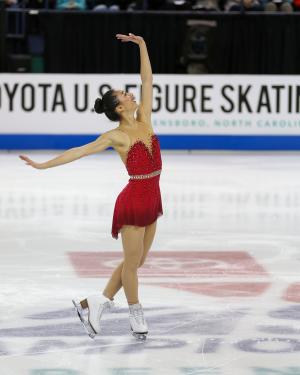
Venetta, 24, says figure skating is as much a mental sport as it is a physical one.
For one thing, the competition was intense. Typically, hundreds of skaters compete to be part of Team USA, and about 15 are selected to compete at the highest level. For Venetta, that meant hitting certain point thresholds to qualify, opening the door to representing the U.S. internationally.
It’s a high-pressure situation. Each time skaters progress to a new level — juvenile to intermediate, then to novice, junior, and finally senior — it’s like starting over, Venetta explained. Suddenly, she would find herself up against skaters who’d been mastering spins and triple jumps at a much higher level for years.
Skating, Venetta came to understand, is as much a mental sport as it is a physical one. At times, she explained, figure skating felt like performing inside a fishbowl: “Everyone's on the outside looking in, and you’re just in the middle, surrounded by these glass walls.”
That pressure shaped the way she approached training. Practicing every move in her program thousands of times built endurance, but it also gave her a deeper appreciation for the mental aspects of figure skating—understanding that you can nail a move again and again in practice, only to fail in competition when it counts.
But she realized that it wasn’t the competition that drew her in. It was the work itself, the journey, the personal challenge.
“I loved training,” she said. “Pushing myself, setting challenges, and then executing something really difficult.”
She would get all of that and more in Colorado Springs.
Skating With Olympians
After graduating high school in 2018, Venetta took a gap year, splitting her time between her hometown of Danville, California, and the U.S. Olympic Training Center in Colorado Springs.
“I had applied to colleges, but I wasn’t ready to let skating go yet,” said Venetta. By 2019, she’d made the move to Colorado Springs full-time, where skating became her life for the next three years.
Training there, she was surrounded by world-renowned coaches, elite athletes, and the best resources.
That first season was a big one for Venetta—her first full year in Colorado Springs and the year she qualified for Team USA. “I got to train with Olympians, skate in this environment where everyone was pushing themselves to be better every single day,” she said. “I accomplished many of my goals that season.”
On the ice, she trained to make her jumps and spins feel intuitive, while off the ice, she pushed the limits of her strength, endurance, and agility through cross-training.
“Figure skating is a very precision-based sport,” Venetta said. “At the lower levels, it still takes that precision, but you can kind of muscle through things a bit more — just put in some brute force and make it happen. But at the higher levels, like doing triple jumps, the margin for error is so small. Jumps happen so quickly; there’s no time to think through everything.”
In one of her performances (captured on video by former Team USA figure skater Jordan Cowan during one of Venetta’s practice sessions), you see exactly what she means.
“It was taken at a high point in my career,” Venetta said. Cowan, who produces a video series, On Ice Perspectives, shot one of the few glimpses of Venetta’s skating that is accessible online.
But the low points, Venetta discovered, provided some invaluable insights that work for sports, as well as research. For one thing, she now realizes that failure is essential in both enterprises. There’s the old saying in research, “if you don’t fail, you’re not trying.” That’s something Venetta learned while wearing a pair of skates.
“Figure skating, of all sports, teaches you how to fall and get back up,” she said. “You don't really have another option. You cannot get better at figure skating without accepting that you're going to fall.”
Where Science Meets Sports
What fascinated Venetta about skating — the precision, the way the body works in perfect coordination — is what eventually drew her to biomedical engineering.
“As an athlete, you become so in tune with your body, and you become familiar with what the body can achieve at an elite level,” Venetta noted. “I’ve always been pretty good at math and science, and I've also always been fascinated by the human body and how it works.”
Her minor in physiology deepened her understanding of the body, while a biomechanics class showed her the physics of how the body comes together in motion.
“Figure skating is all about biomechanics,” she said.
For Venetta, this study of human motion has mirrored what she loves about figure skating: breaking down every move, every fraction of a second, to fully understand the mechanics.
When she was training, her coach, Christy Krall, broke down each jump Venetta made through video analysis, dissecting her form, frame by frame. Venetta recalled, “She’d say, ‘Your elbow’s out here. Try imagining throwing salt over your shoulder before takeoff.’ And somehow, it worked.”
One of Venetta’s favorite classes at Georgia Tech has been Materials Science and Engineering of Sports, taught by Jud Ready, Ph.D., principal research engineer with the Georgia Tech Research Institute (GTRI).
“We studied a range of sports — baseball, soccer, basketball, skiing, golf — examining how equipment has evolved with the needs of the athletes,” she said. The class also took field trips to sports facilities and met with experts to learn how regulations and technology in the sports world have shaped modern gear.
And when it came to figure skating, Venetta stepped in as the resident expert, sharing with the class her knowledge and experience with skates and the equipment involved in the sport.
“Dr. Ready is very pro- student athlete, very pro- student success,” Venetta said. “He offered a lot of opportunities for us as his students, to go further into research or find employment.”
One of those opportunities led Venetta to a research position at GTRI, where her research interests shifted to studying nanoparticles in bladder cancer therapy in GTRI’s Electro-Optical Systems Laboratory.
“Doing something with a medical application is important to me,” she said. And bladder cancer presents a worthy challenge because it is particularly difficult to eradicate.
After removing a tumor, for example, “there may be smaller pieces left behind, because they're too small to detect or they look like normal cells, but really they're part of the tumor,” she said.
At GTRI, she focused on an approach that precisely targeted the leftover cancerous cells using laser ablation and nanoparticles called fullerenes. Her team worked on a project that engineered fullerenes so that they could bind specifically to bladder cancer cells.
“So, if you were to hit it with a laser, it would create a small, localized, combustion reaction, killing the cancer cells, but not the healthy cells around it,” she said.
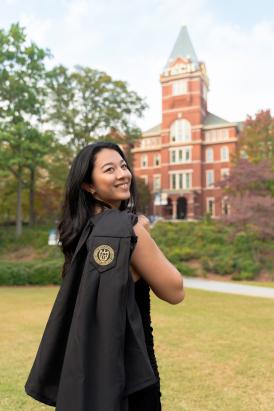
Venetta has found commonalities between the work it takes to master figure skating and the work it took to complete her degree.
Venetta saw her research at Georgia Tech as a chance to not only challenge herself but also uncover whether this work aligned with her career goals.
Meanwhile, as she approaches graduation this December, it’s easier to see the connections between the lab work and athletic training at a high level. Both require a lot of repetition, and lots of learning along the way, then leveraging that knowledge to discover something new.
And while the process gets easier, it never stops being a challenge. On difficult days, she reminds herself to pause, to recognize progress in small ways.
“In my last year of training, I started patting myself on the thigh twice, like a little pat on the back, every time I did something well,” she said. “If I landed a nice jump, two taps. Ran a great program, two taps. Just a small reminder: ‘Good job. That was good.’”
For Venetta, it’s never been just about the outcomes or achieving perfection. It’s always been about progress — discovering and then rediscovering how much further she can go.
“To reach a high level in skating, it takes a blend of natural talent and a lot of hard work,” she reflected. “For me, it was always about pushing this gift as far as I could. How good can I get? How much can I accomplish with this talent I was given?”
Latest BME News
BME researcher Ankur Singh using new technology to uncover weakened response in cancer patients
Research team led by BME's Cheng Zhu probes the underlying mechanisms of PD-1 checkpoint inhibitor therapy
Georgia Tech grad reflects on his rookie season as a biomechanics engineer with the New York Mets
First-year students learned about the resources and support they could access during their college journey in BME.
BME assistant professor using Sloan Scholars Mentoring Network seed grant to support her lab's work
Coulter Department honors Jaydev Desai, Melissa Kemp, Gabe Kwong, and Johnna Temenoff
Biomedical engineer will present groundbreaking mapping tool aimed at drug resistant cancers at BMES Annual Meeting

